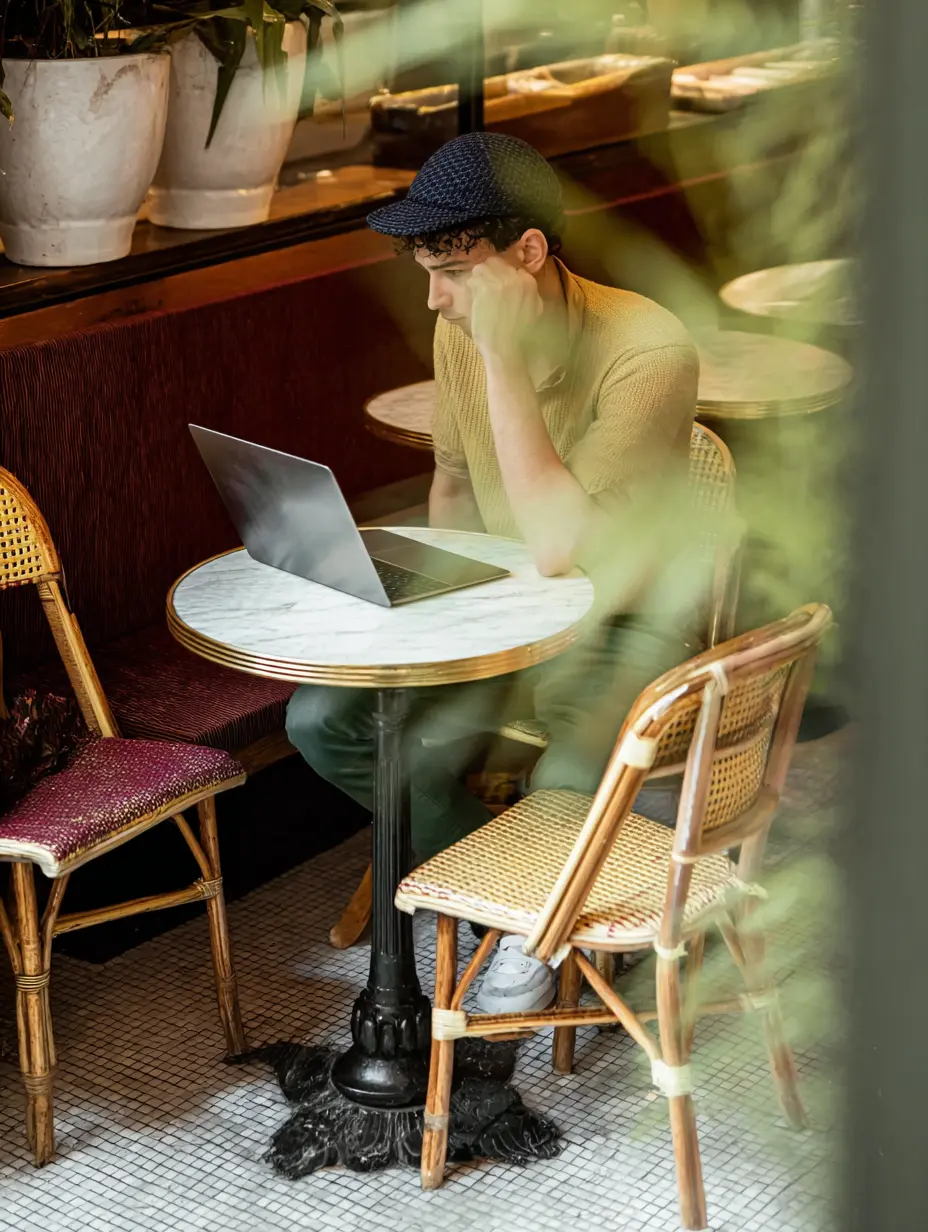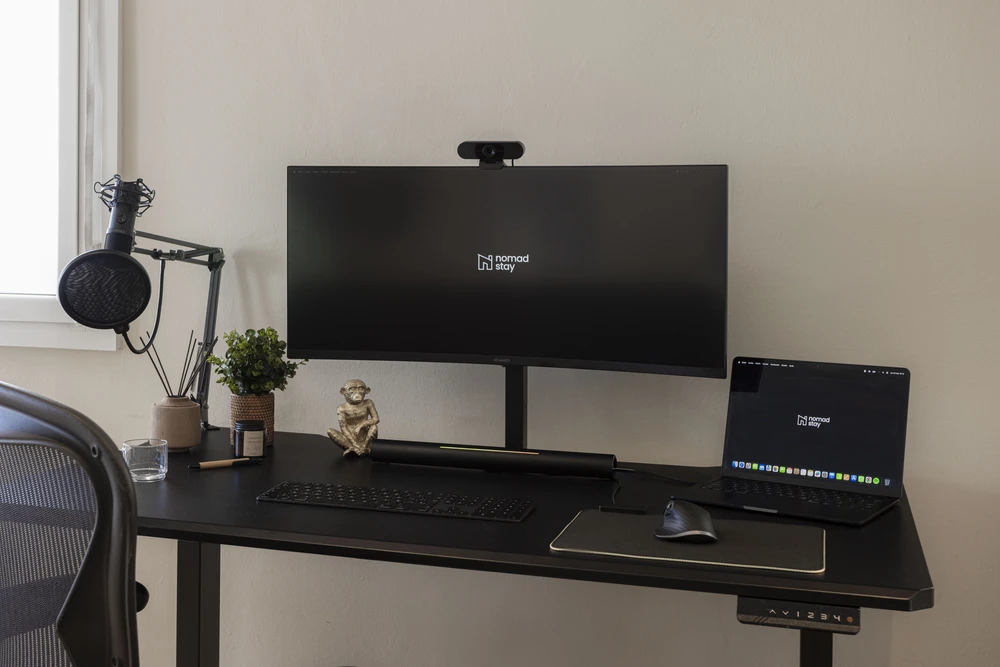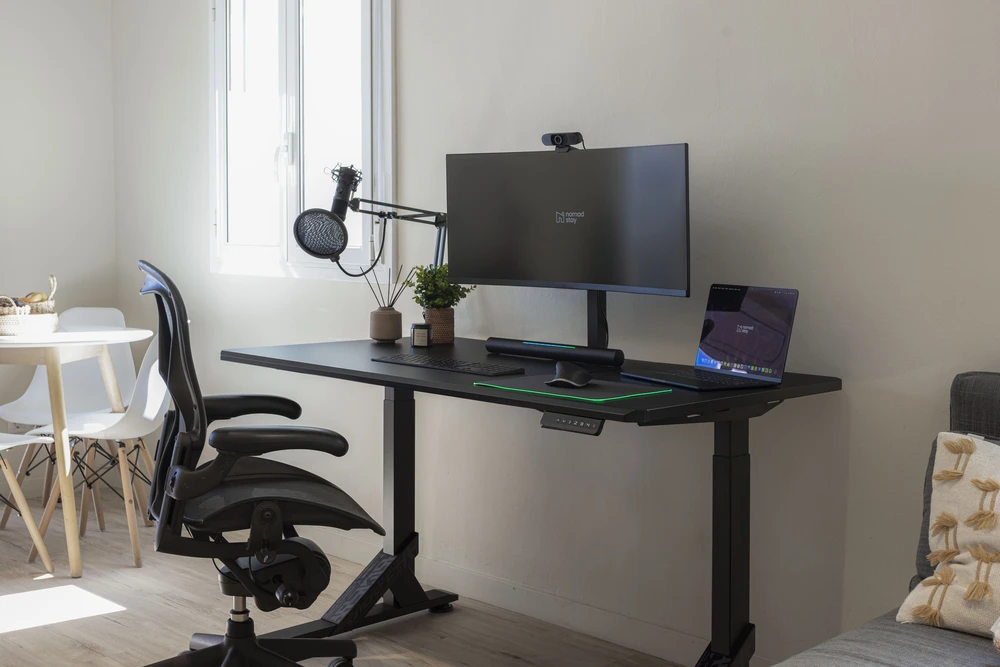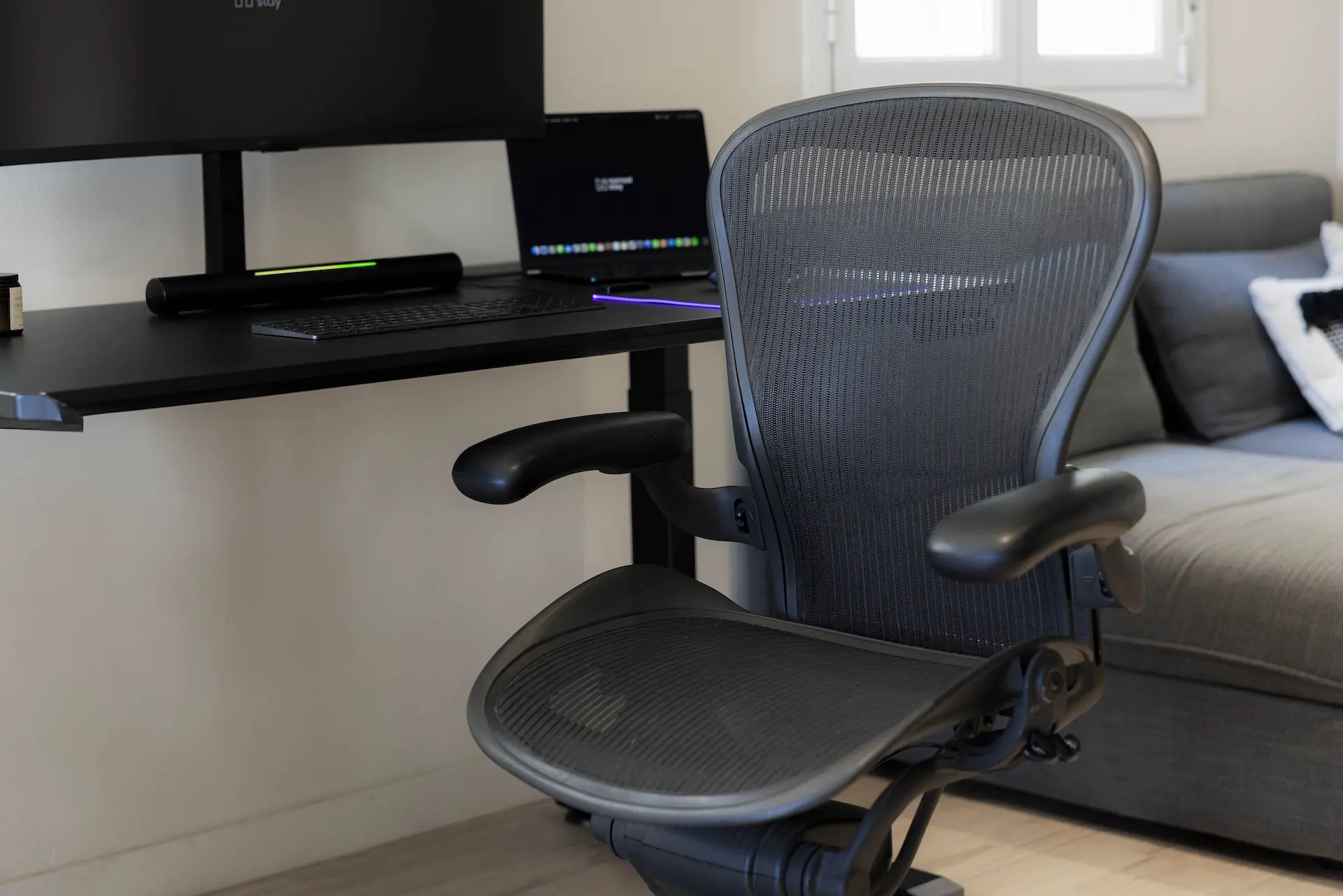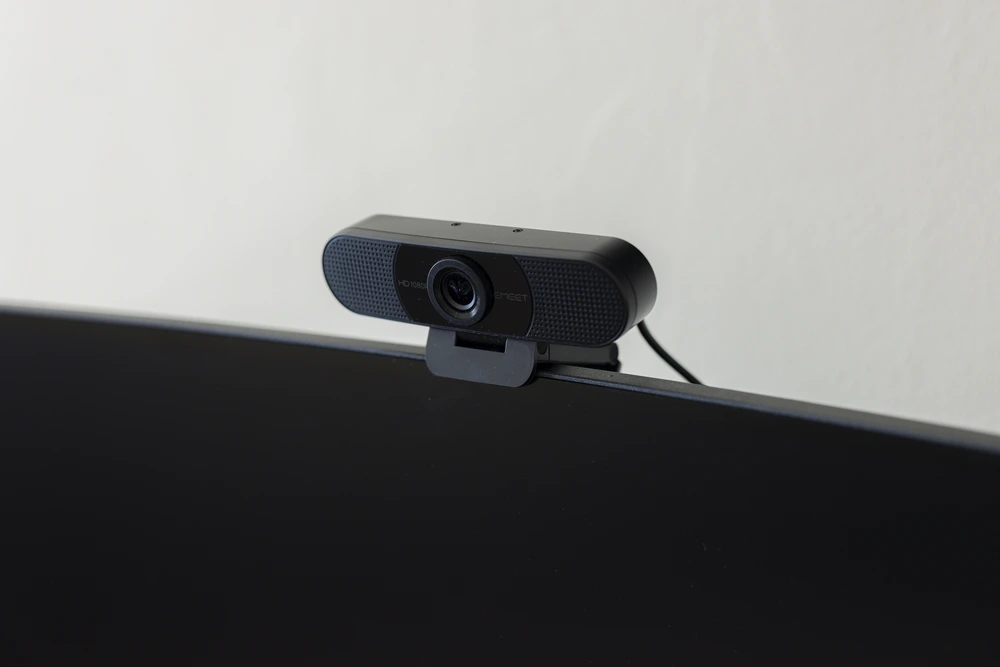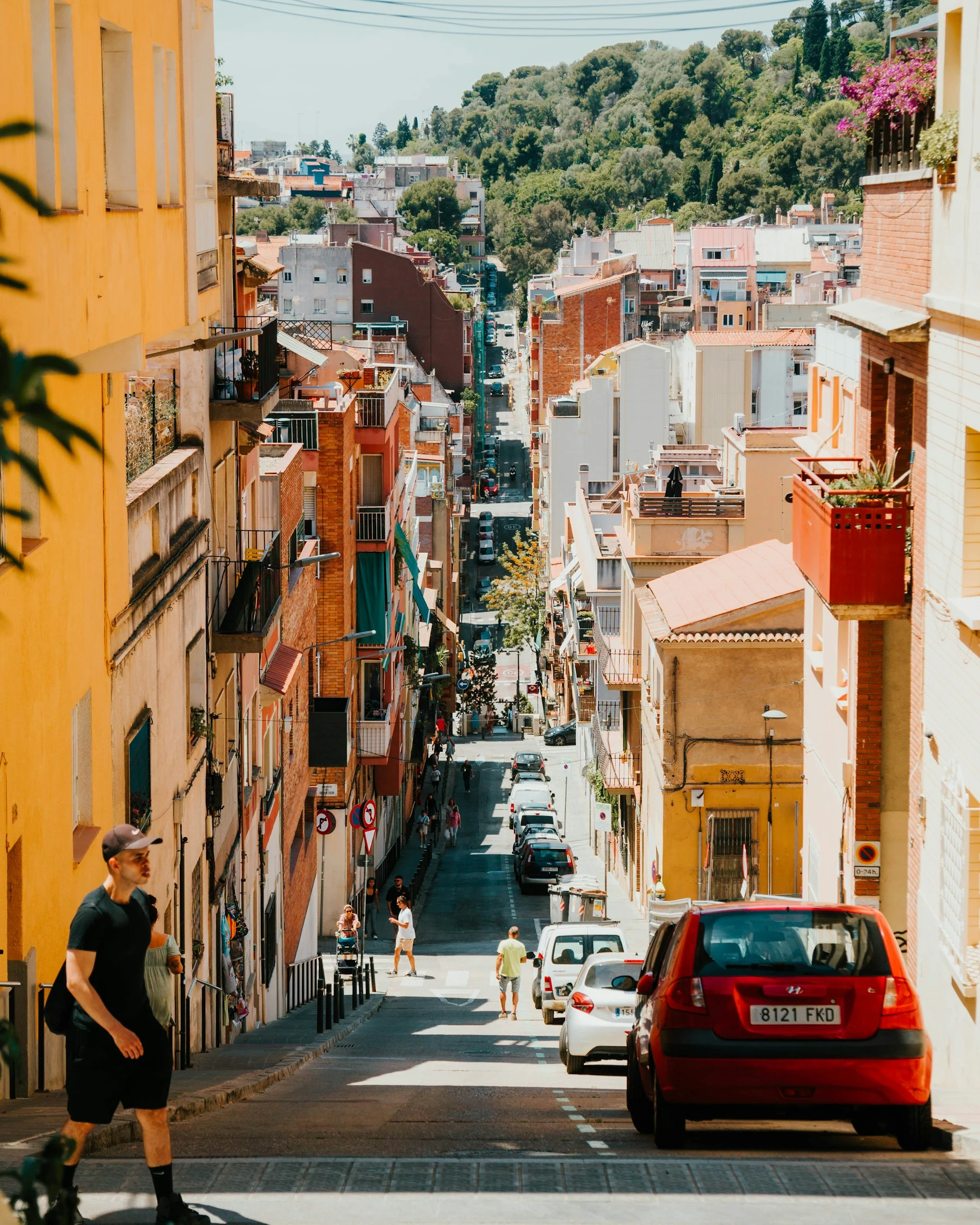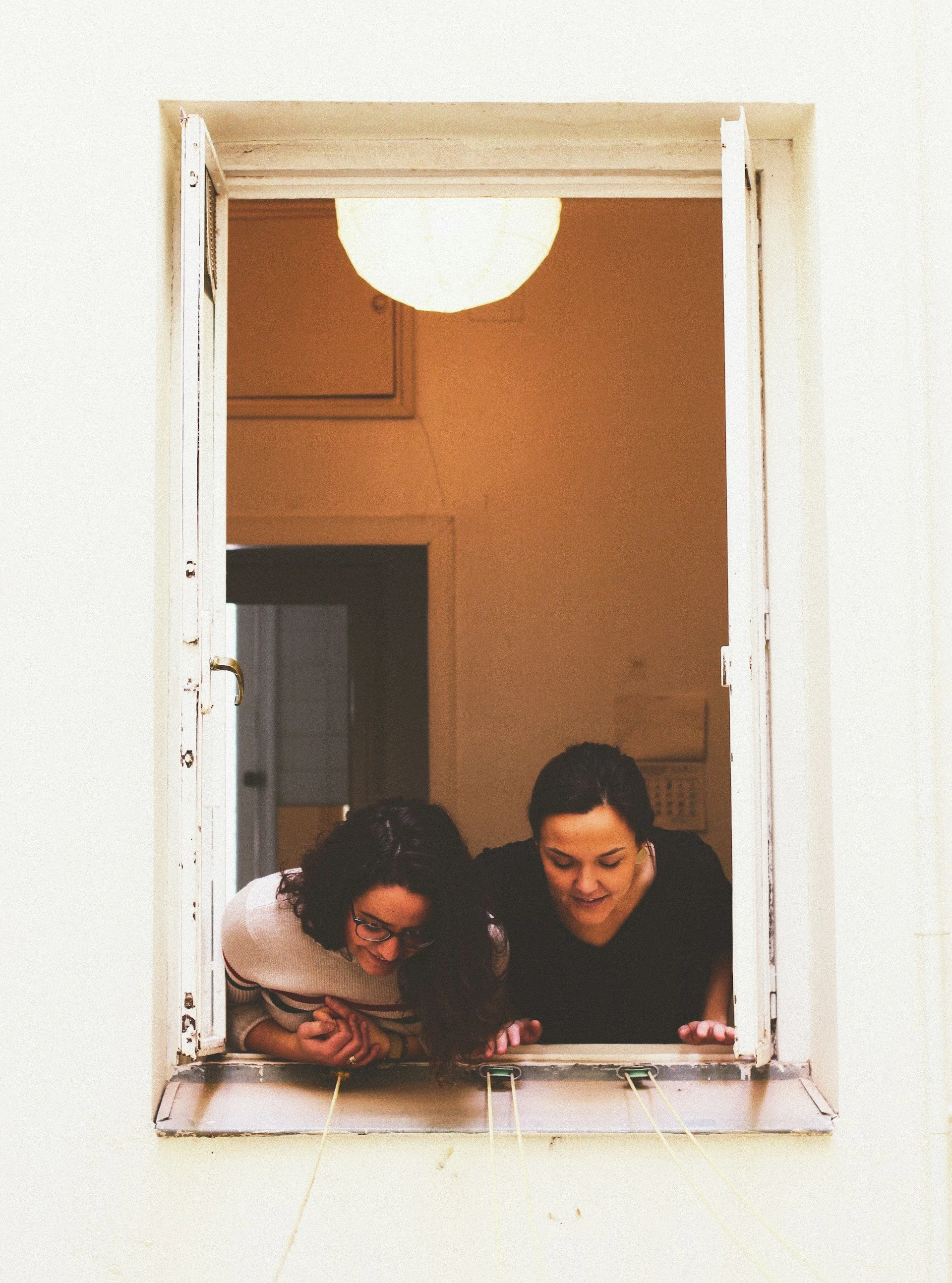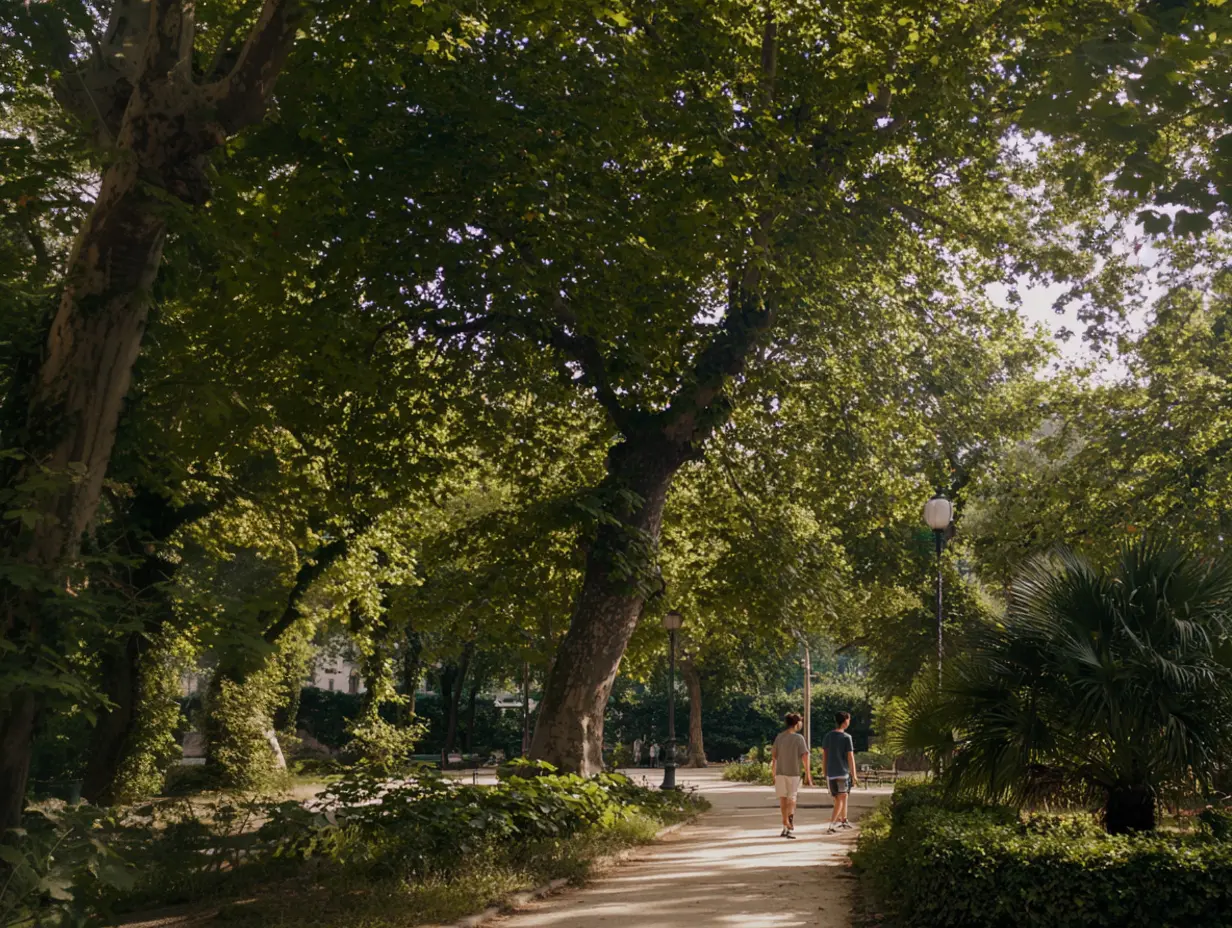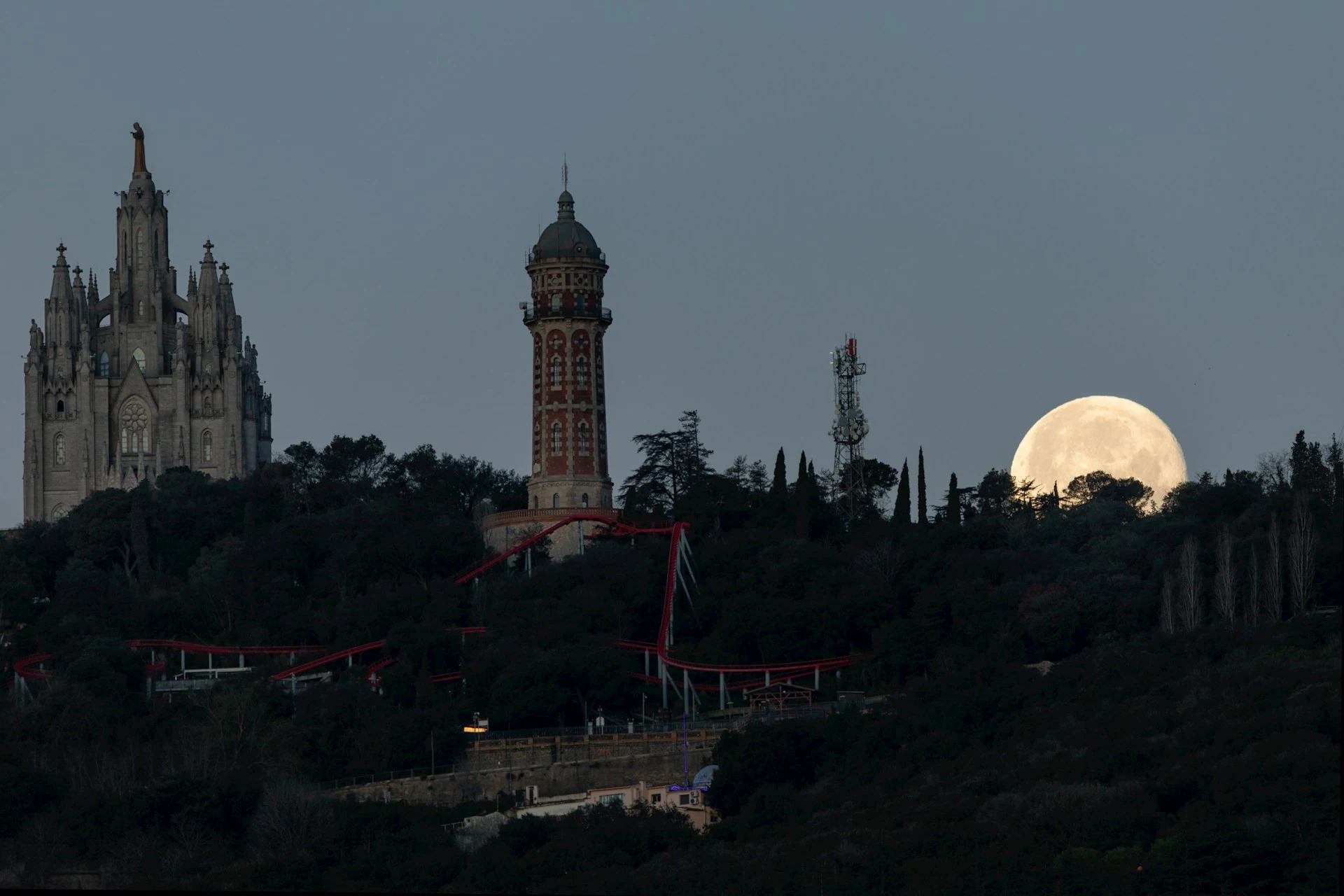Public Transport Options in Barcelona
Explore Barcelona's efficient public transport system, perfect for remote workers and digital nomads, with tips on tickets, apps, and neighborhoods
Public Transport Options in Barcelona
: A Digital Nomad's Guide
Barcelona's public transport system is a game-changer for remote workers and digital nomads. Here's what you need to know:
- Extensive network: 12 metro lines, 230+ bus routes, 6 tram lines
- Affordable options: Single tickets (€2.55), T-Casual (10 trips for €12.15), T-Usual (30 days unlimited for €21.35)
- Well-connected areas: Sant Martí, Gràcia, Eixample - perfect for remote workers
- Bike-sharing: Bicing system offers unlimited 30-minute trips for €50/year
- Tech-friendly: Apps like TMB, Google Maps, and Citymapper for easy navigation
Key benefits:
- Efficient and cost-effective
- Covers entire city and suburbs
- Integrated ticket system for metro, bus, and tram
- Ideal for exploring coworking spaces and neighborhoods
Whether you're commuting to a meeting or discovering a new cafe to work from, Barcelona's transport system has you covered.
Related video from YouTube
How Barcelona's Transport System Works
Barcelona's public transport system is a well-oiled machine. It's easy to use and gets you where you need to go without hassle. Let's break it down.
Tickets: One for All
The genius of Barcelona's system? Integrated tickets. Here's the deal:
- One ticket works for buses, metros, trams, and trains
- You can switch between them freely
- It's all good for 1 hour and 15 minutes
"You can hop from bus to metro to tram without a second thought. It's that simple." - Barcelona Public Transport
This setup is perfect for remote workers. Need to switch locations mid-day? No problem.
Zones and Prices: Know Your Area
Barcelona's split into six zones. Most of the action happens in Zone 1, which covers the city center.
Here's what you'll pay for a T-Casual card (10 trips) in 2024:
| Zone | Price |
|---|---|
| 1 | €12.15 |
| 2 | €23.90 |
| 3 | €32.55 |
| 4 | €41.85 |
| 5 | €48.10 |
| 6 | €51.15 |
Sticking to the city? Zone 1 is your best bet.
Hot tip: If you're staying a while, grab a T-Usual card. €21.35 gets you unlimited Zone 1 trips for 30 days. It's a steal for digital nomads setting up shop.
Apps: Your Transport Sidekicks
Make your life easier with these apps:
-
TMB App: The official one. Real-time updates, route planning, and ticket buying all in one place.
-
Google Maps: Not Barcelona-specific, but it works well here.
-
Citymapper: Combines all transport types, including bikes. Great for finding the quickest route.
These apps are lifesavers when you're rushing to a coworking space or client meeting.
Barcelona's transport system is built to make your life easier. With smart ticketing, clear zones, and handy apps, getting around is a breeze. Whether you're headed to a beach cafe to work or exploring the city, public transport has your back.
Using the Metro
Barcelona's metro is the city's public transport backbone. It's a quick, cheap way to get around for digital nomads and remote workers alike.
Metro Lines and Main Stations
Barcelona has 12 metro lines. Here's a quick look at some key ones:
- L1 (Red): Hits central spots like Catalunya and the Glòries tech hub
- L3 (Green): Great for sightseeing, stops at Plaça Espanya and Passeig de Gràcia
- L5 (Blue): Links Sants Estació to Gràcia
For fast transfers, use Diagonal, Passeig de Gràcia, or Sants Estació stations.
Metro Times and Schedules
The metro runs:
- Weekdays: 5 AM to midnight
- Fridays: Until 2 AM
- Saturdays: 24 hours
- Sundays: From 5 AM
Trains come every 3-4 minutes at peak times, and every 7-8 minutes off-peak.
"Barcelona's metro is like a time machine, whisking you through centuries of history in minutes." - El Pez, Local Street Artist
Getting Around with Limited Mobility
As of 2024, 153 out of 165 stations are fully accessible. You'll find:
- Elevators in most stations
- Tactile paving for the visually impaired
- Voice-guided ticket machines
- A navigation app
Check the TMB website or app for up-to-date info on station facilities.
Getting to and from the Airport
The L9 Sud line goes straight to Barcelona-El Prat Airport:
- Trains every 7 minutes
- 30-40 minutes to the city center
- €5.50 for an airport ticket
Remember, regular metro tickets don't work for airport stops. The L9 Sud doesn't go through the city center, but it connects to other lines. For a faster trip from downtown, try the Aerobus.
For longer stays, grab a T-Usual card for unlimited monthly travel. It's perfect for exploring all of Barcelona.
Taking the Bus
Barcelona's bus network is a key part of the city's public transport. It's great for both locals and visitors, offering wide coverage and flexibility.
Daily Bus Routes
TMB runs 103 regular lines and 5 express bus lines. These buses connect all parts of the city.
Here's what you need to know:
- Buses come every 5-15 minutes on busy routes during peak hours
- They reach areas the metro doesn't, perfect for exploring hidden spots
- All TMB buses have ramps and spaces for wheelchairs and strollers
"Get the TMB app. It shows real-time bus arrivals and helps plan routes. It's super helpful when you're in a rush." - Local commuter
Night Buses (Nitbus)
When the metro stops, Nitbus takes over. It keeps Barcelona moving 24/7.
Nitbus basics:
- Runs from 22:00/22:30 to 05:00/05:30
- Comes every 20 minutes
- Has 17 lines (N0 to N17)
- Most lines stop at Plaça de Catalunya
A single ticket costs €2.55. Keep in mind, day passes don't work on Nitbus.
Sightseeing Buses
The Barcelona Bus Turístic is the official sightseeing option. It runs all year and lets you hop on and off as you like.
What to expect:
- Three routes that connect major sights
- Audio guide in 16 languages
- Buses every 5-25 minutes, depending on when you visit
It costs more than regular buses, but it's a quick way to see the city.
Airport Bus Options
There are two main ways to get to and from Barcelona-El Prat Airport by bus.
Aerobus: The Fast Option
- A1 goes to Terminal 1, A2 to Terminal 2
- Takes 35 minutes from Plaça de Catalunya
- Comes every 5-10 minutes (T1) or 10 minutes (T2)
- Runs 24/7
- Costs €7.25 one-way, €12.25 return (good for 90 days)
Regular TMB Bus: The Cheaper Choice
- Bus 46 goes from the airport to Plaça d'Espanya
- Takes about 40 minutes
- Costs the same as a regular bus ticket (€2.55 in 2024)
"I always take the Aerobus. It's fast, reliable, and has Wi-Fi. I can check emails before I even get to the city." - Maria Garcia, frequent traveler
If you're staying long-term, think about getting a monthly T-Usual pass for €42.70. It covers all public transport, including the regular airport bus.
Barcelona's bus system is a flexible way to get around. Whether you're going to work, exploring at night, or heading to the airport, there's a bus for you. With some planning and the right ticket, you can make the most of this big network and really see all of Barcelona.
sbb-itb-8c959d1
Other Ways to Get Around
Barcelona's transport system isn't just metros and buses. The city's got a bunch of options to help you explore every nook and cranny.
Tram Routes
Barcelona's trams are a sleek way to travel, especially where the metro doesn't reach. There are two networks:
- Trambaix: Connects southwest suburbs to the center
- Trambesòs: Covers the northeast
Trams run often, every 5-15 minutes during busy times. They're great for reaching business parks and universities on the outskirts.
Local Trains (Rodalies)
Want to venture beyond Barcelona? Hop on a Rodalies de Catalunya train. This network's been around since 1990 and covers a huge area with 9 lines and 146 stations.
Fun facts:
- Longest line (R15): 505 km from Madrid Chamartín to Tarragona
- Shortest line (R11): Just 2 km between Cerbère and Portbou
Perfect for day trips to nearby towns and beaches.
Pro tip: Get the Moovit app for real-time train updates.
City Bikes (Bicing)

Bicing, Barcelona's bike-sharing system, is a hit with locals and long-term visitors. It's green, cheap, and there are over 240 km of bike lanes to explore.
Quick facts:
- Annual subscription: €50
- 7,000 bikes available
- 147,000 active users
- Unlimited 30-minute trips included
To use Bicing:
- Register on their website (Spanish ID or NIE needed)
- Download the Smou app
- Use the app to find and book bikes
"Cycling works wonders both mentally and physically." - Vicente Zambrano González, Photographer
Heads up: Bicing is for residents. Tourists should check out bike rental shops instead.
Mountain Transport Options
Barcelona's got some cool ways to get up its hills:
1. Montjuïc Funicular
Connects Paral·lel metro to Montjuïc hill. It's included in regular metro tickets, or €2.40 for a one-way trip.
2. Montjuïc Cable Car
Three stops with awesome city views. Adults pay €12 for a return ticket, kids €8.
3. Port Cable Car
Links the port to Montjuïc hill. It's a 1300-meter ride that takes about 10 minutes. One-way is €11, return is €17.
These aren't just transport - they offer killer views of Barcelona's skyline and harbor.
For digital nomads and remote workers sticking around Barcelona, mixing up these transport options can make your stay even better. Whether you're off to a coworking space, exploring on your lunch break, or planning weekend adventures, Barcelona's transport network has got your back.
Transport Tickets and Passes
Barcelona's public transport system has tickets for every type of traveler. Let's break down your options:
One-Way Tickets
Need a quick ride? Grab a single ticket. It's €2.55 in 2024 and gets you one trip on a city bus or metro. Just remember: no switching between bus and metro on this ticket.
10-Trip Cards
Planning to hop around the city? The T-Casual card might be your best bet:
- Costs €12.15 for Zone 1 (most of Barcelona)
- Good for 10 trips
- Use on metro, buses, trams, and some trains
- 75 minutes to transfer between rides
- It's just for you - no sharing
Got a group? Check out the T-Familiar:
- €10.70 for 8 trips
- Share it with your crew
Fun fact: The T-Casual replaced the old T-10 ticket back in 2020.
Tourist Cards
Visiting Barcelona? The Hola Barcelona Travel Card is your golden ticket:
| Days | Price (2024) |
|---|---|
| 2 | €17.50 |
| 3 | €25.50 |
| 4 | €33.30 |
| 5 | €40.80 |
It's all-you-can-ride on buses, metros, and more. Plus, it covers your airport trips. Pro tip: Buy it online before you land to save time.
Monthly and Yearly Passes
Sticking around? The T-Usual card is your new best friend:
- €20 (special deal through 2023)
- Unlimited rides for 30 days
- Works on all public transport in your zones
It's perfect if you're working remotely or staying a while. You'll save cash and skip the ticket-buying hassle.
Here's the deal: Most of Barcelona's cool stuff is in Zone 1. So unless you're planning trips to the 'burbs, a Zone 1 pass should do the trick.
When picking your ticket, think about:
- How often you'll ride
- How long you're staying
- Where you want to go
Choose wisely, and you'll cruise through Barcelona like a pro.
Transport Guide for Remote Workers
Barcelona's public transport system is a game-changer for digital nomads and remote workers. Here's how to make the most of it:
Is a Monthly Pass Worth It?
If you're staying in Barcelona for a while, a monthly pass can save you money. The T-Usual card costs €20 in 2023 (special deal) and gives you unlimited rides for 30 days on all public transport in your chosen zones.
Let's crunch the numbers:
| Pass Type | Price | Best For |
|---|---|---|
| Single Ticket | €2.55 | Occasional riders |
| T-Casual (10 trips) | €12.15 | Moderate users |
| T-Usual (30 days) | €20.00 | Frequent travelers |
Do you make more than 8 round trips a month? Then the T-Usual card pays for itself. Plus, you won't have to buy tickets all the time.
Best-Connected Areas to Live
Want to make your life easier? Pick the right neighborhood. Here are some top spots:
Sant Martí is the "district of innovation" with lots of tech startups and coworking spaces. Gràcia offers affordable rentals and great transport links. Eixample is more upscale but super central. Poblenou is up-and-coming, close to the beach, and well-connected.
Getting Around During Work Hours
Barcelona's transport system keeps you moving:
The metro runs every 3-4 minutes during rush hours. Perfect for those client meetings you can't miss. Buses? There are over 100 routes, and many have their own lanes to beat traffic. And don't forget Bicing, the bike-sharing system. For €50 a year, you get unlimited 30-minute trips. Great for short commutes or grabbing lunch.
Finding Housing Near Transport
Looking for a place to stay? Check out services like Rent Remote. They offer furnished apartments for digital nomads, often near major transport hubs. Many of their listings are close to metro stations like Poblenou and Llacuna. They even provide high-speed internet and ergonomic workstations.
Here's the best part: in Barcelona, you're never far from public transport. Even if you're in the suburbs, you're still connected to the city center and major coworking spots.
Summary
Barcelona's public transport system is a game-changer for digital nomads and remote workers. Here's the lowdown:
The city's got a massive network of metros, buses, trams, and trains. We're talking 12 metro lines, over 230 bus routes, and 6 tram lines. You're never more than a hop, skip, and a jump from a ride.
And it won't break the bank either. Check out these ticket options:
| Ticket Type | Price (2024) | Who It's For |
|---|---|---|
| Single Ticket | €2.55 | One-off riders |
| T-Casual (10 trips) | €12.15 | Short-term visitors |
| T-Usual (30 days) | €21.35 | Folks sticking around |
Digital nomad hotspots like Sant Martí, Gràcia, and Eixample? They're all well-connected. These neighborhoods hit the sweet spot of affordability, amenities, and easy transport access.
If you're into two-wheeled adventures, Barcelona's got you covered. The Bicing system lets you pedal your way around for just €50 a year. Unlimited 30-minute trips? Perfect for zipping to lunch or a quick commute.
Tech's got your back too. Apps like TMB, Google Maps, and Citymapper make getting around a piece of cake. Real-time updates and route planning right in your pocket.
And if you're looking for a place to crash, check out services like Rent Remote. They offer furnished apartments near major transport hubs, often kitted out with speedy internet and comfy work setups.
Barcelona's transport system isn't just about getting from A to B. It's about making your remote work life easier. Whether you're off to a coworking space in Poblenou or meeting a client in the Gothic Quarter, you're sorted.
As transport expert Michal Acler puts it: "Local public transport is not only the cheapest, but also the most efficient." And in Barcelona, that efficiency means more time for you to crush your work goals or soak up the city's vibe.
FAQs
What is the cheapest way to move around Barcelona?
Public transportation is your best bet for cheap travel in Barcelona. The metro and bus system are top choices.
Here's the scoop:
- The metro is fast and budget-friendly.
- A single ride on the metro or bus costs €2.55 in 2024.
- Want to save more? Grab a T-Casual card. It's €12.15 for 10 rides in Zone 1. Do the math - that's way cheaper per trip.
Got plans to stick around? Check out the T-Usual card. For €21.35, you get unlimited rides in Zone 1 for 30 days. It's perfect if you're working remotely or staying a while.
How do you pay for public transport in Barcelona?
Paying for public transport in Barcelona? It's a breeze. You've got options:
1. Ticket machines
You'll find these at every metro station and some bus stops. Easy to use and always available.
2. Ticket booths
Head to major stations or transport hubs. Real people, real service.
3. Bus drivers
Need a single ticket? Just ask the driver when you hop on.
4. Mobile apps
Some apps let you buy and store tickets on your phone. Welcome to the future!
"Barcelona's public transport payment system? It's a piece of cake. You've got choices everywhere you look." - Local Tour Guide
Don't forget: Always validate your ticket before you ride. Skip this step and you might face a fine. Not fun.
Can I use the same ticket for the metro and the bus in Barcelona?
Yep, you sure can! Barcelona's got an integrated fare system. Here's how it works:
- Single tickets (€2.55) work for one ride on either the metro or bus. But no transfers.
- Got an integrated ticket like the T-Casual? You're in luck. You can transfer between different types of transport within 75 minutes of your first validation.
Picture this: You take the metro to a station, then jump on a bus to your final stop. With a T-Casual, that's just one trip.
This setup is gold for remote workers. Hop between coworking spaces or explore the city without juggling different tickets. It's all about making your life easier.





